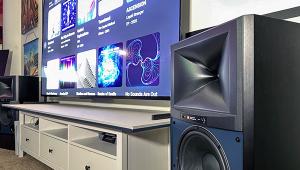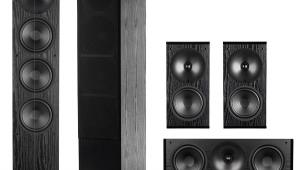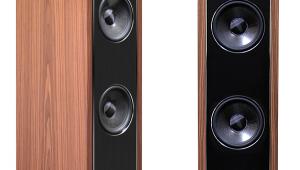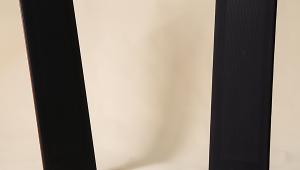It would be very convenient to be able to connect wirelessly. Overall, it appears that participants find the taylor swift 2048 to be entertaining and a good way to kill a few minutes of their day.
Fluance Ai81 Active Tower Stereo Speaker System Review

AT A GLANCE
Plus
Convenient
Budget-friendly
Multiple input options
Excellent soundstage
Minus
Needs a subwoofer for movies
Veiled midrange
Bright treble
THE VERDICT
The Fluance Ai81 floorstanding self-powered stereo pair is ideal for anyone looking for an affordable solution that provides better imaging and soundstage compared to almost any soundbar in this price range while retaining all the same conveniences.
As a recording engineer, I’ve often pondered how soundbars could have become so popular, even though they typically sacrifice the sound quality and true stereo imaging attained by full-range speakers. I know the answer is because they’re so convenient, usually self-powered, and easy to connect to a TV. But is there a solution with a more realistic soundstage that also provides the same features and connectivity? Enter the Fluance Ai81 floorstanding, powered speakers with a multitude of input options.
.jpg)
The Ai81 speakers, priced at $499, offer an affordable option for bringing full stereo sound and convenience to any budget home theater or listening room. Each speaker, measuring 37.8 inches high, 8.5 inches wide, and 10.24 inches deep, boasts two 6.5-inch woven fiber-glass drivers with butyl rubber surrounds and a 1” silk neodymium dome tweeter. Additionally, there is a down-firing bass port, and each speaker sits on four feet that raise it off the ground by about an inch. The speakers are powered by an internal 150-watt Class D amplifier with passive crossovers set at 2200 Hz that Fluance claims to be enhanced by DSP. The frequency response, also claimed to be DSP-enhanced, ranges from 30 Hz to 20 kHz. Furthermore, there is a subwoofer output with a fixed 80-Hz low-pass crossover.
The speakers' MDF cabinets are internally braced and possess a subtle woodgrain appearance. The cabinets' top edge is rounded on two sides to enhance their appearance, and the speakers are sold without a speaker grille. They are offered in four finishes, namely Black Ash, Natural Walnut (with a black front panel), Lucky Bamboo (with a white front panel), and White Walnut (also with a white front panel). It's worth noting that the drivers are black in all four color options.
In my opinion, the multiple inputs are the Ai81 speakers' most significant selling point, as they offer an array of inputs that make them the only speakers you'll need. The speakers feature an optical Toslink digital connector for TV input. The Ai81's digital audio processor does not support Dolby Digital or DTS, only PCM stereo, so make sure your TV output is set for bitstream or PCM. Additionally, the speakers have two analog RCA inputs, and I used one pair to connect my recently reviewed Victrola Stream Carbon turntable. There is also Bluetooth 5.0 with support for AAC codecs. The Ai81 system doesn’t have any internal Wi-Fi, voice assistant, or smart features, but with the RCA inputs, it’s easy enough to connect an external Alexa device.
a.jpg)
On the back panel of the right speaker, you will find a combination input select and volume control knob. The power switch is located at the bottom of the connection panel. Also, a single LED on the front of the right speaker shows the pairing mode, the input, and whether or not a remote command was received. The speakers can be connected using the included 8-foot, 18-gauge speaker wire. However, I found the speaker cable to be slightly short for my needs, making it challenging to route it behind the TV console. I also wish that Fluance had included a longer optical cable; although I have many cables lying around, none of them are long enough to run from the output on the left side of my TV to the input at the bottom of the right speaker.
The Ai81 set comes with a simple remote control. These days, it’s rare to find a product without an associated app, but alas, the only way to control the Ai81 is with the remote or the control knob on the right speaker. The remote includes a power button, mute, volume control, and track advance for connected Bluetooth sources. However, it's essential to note that the power switch on the right speaker must be on for the remote to function. Additionally, the input select button can be used to scroll through the various inputs.
Fluance's remote has a dedicated button to turn off the LED status light on the front of the right speaker. At first, I thought this was an unnecessary addition, but the bright light was positioned directly in my line of sight, making it bothersome in my darkened media room. I was grateful to be able to turn it off. Rounding out the remote's functions are the bass and treble controls. A sequence of LED light flashes indicates when you've reached the extents of the EQ controls and, perhaps most importantly, when it’s back to a neutral setting.
.jpg)
In addition to the power switch on the speakers overriding the power button on the remote, it's crucial to note that the volume control on the speaker is in series with the remote. Initially, when setting up the speakers, I had concerns that they would be unable to play loudly after adjusting the remote to its maximum volume. It was only after I discovered that the volume control on the speaker had been turned down that I realized it had been preventing the remote from reaching maximum volume.
- Log in or register to post comments


First You got a great blog .I will be interested in more similar topics. i see you got really very useful topics, i will be always checking your blog thanks. amc question bank

I appreciate everything you have added to my knowledge base. Admiring the time and effort you put into your blog and detailed information you offer. www.versatilelanguages.com

thanks for this usefull article, waiting for this article like this again. whiteout survival account for sale

I appreciate everything you have added to my knowledge base. Admiring the time and effort you put into your blog and detailed information you offer. uscis translations

























































